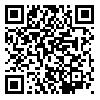Volume 8, Issue 4 (3-2022)
Journal of Spatial Analysis Environmental Hazards 2022, 8(4): 157-178 |
Back to browse issues page
Download citation:
BibTeX | RIS | EndNote | Medlars | ProCite | Reference Manager | RefWorks
Send citation to:



BibTeX | RIS | EndNote | Medlars | ProCite | Reference Manager | RefWorks
Send citation to:
Asghare Saraskanrod S, Jalilian R. Change Detection Gamasiab River Margins in Kermanshah by Comparison Pixel Base and Object Orientd Algorithms. Journal of Spatial Analysis Environmental Hazards 2022; 8 (4) :157-178
URL: http://jsaeh.khu.ac.ir/article-1-3101-en.html
URL: http://jsaeh.khu.ac.ir/article-1-3101-en.html
1- University of Mohaghegh Ardabili, Ardabil, Iran , sayyad.sasghari21@gmail.com
2- University of Mohaghegh Ardabili, Ardabil, Iran
2- University of Mohaghegh Ardabili, Ardabil, Iran
Abstract: (6885 Views)
Introduction
Land use reflects the interactive characteristics of humans and the environment and describes how human exploitation works for one or more targets on the ground. Land use is usually defined on the basis of human use of the land, with an emphasis on the functional role of land in economic activities. Land use, which is associated with human activity, is undergoing change over time. Land use information and land cover are important for activities such as mapping and land management. Over time, land cover patterns and, consequently, land use change, and the human factor can play a major role in this process. Today, satellite-based measurements with geographic information systems are increasingly being used to identify and analyze land-use change and land cover. With regard to the problems of changes and transformations in the studied area, remote sensing can allow managers to categorize images and evaluate land use changes, in addition to saving time and costs, which allows planners to make plans based on changes, more resources are lost. To be prevented.
Materials & Methods
In order to classify and detect the marginal land of the river, TM and OLI image images were selected for a specific month (August, August) for the years 1987 and 2017. The purpose of this study was to investigate the changes occurring in the studied area with an emphasis on agricultural lands. To do this, the images before processing in the ENVI software took radiometric, atmospheric and geometric corrections on them. After that, the main components of the river route were extracted. Five basic algorithms were used to classify the base pixel, but eCognition software was used to classify the object. Supervised classification identifies homogeneous regions with examples of land use and land cover, in which pixels are assigned in known information classes. Education is a process that determines the criteria for these patterns. Learning output is a set of spectral signatures of proposed classes. The first step in object-oriented classification is the segmentation of the image and the creation of distinct objects, consisting of homogeneous pixels. The main purpose of image segmentation is to combine pixels or small objects to create large image objects based on the spectral and spatial characteristics of the image. In order to evaluate the accuracy and compare the resulting maps, the overall accuracy and Kappa coefficient are used. When the sampling of pixels is done as a spectral or informational class pattern, the evaluation of the spectral reflection of classes and their resolution can also be done. An algorithm with the highest accuracy and accuracy will be the basis for the detection. Detection of changes, which leads to a two-way matrix and shows variations of the main types of land use in the study area, was carried out in this study. Pixel-based cross-tabulation analysis on pixels facilitates the determination of the conversion value from a specific user class to another user category and areas associated with these changes over the given time period.
Results & Discussion
The results showed that the object-oriented method is more accurate than the base pixel algorithms for providing user-defined maps. The amount of accuracy in the method based on object-oriented classification depends largely on choosing the appropriate parameters for classification, defining the rules, and applying the appropriate algorithm to obtain the degree of membership. The Kappa coefficient for each image is approximately 0.90. So these maps are the basis for the discovery of change. According to the results, the agricultural and residential lands have been increased and this increase has been accompanied by a decrease in rangelands. A general overview of this 30-year period shows that the arable and dry farming, respectively, increased by 2418.79 and 719.61 hectares and the rangelands had a decrease of 2848.86 hectares. However, the residential class and human effects show an increase of 428.88 hectares or a growth of 178.87%, which indicates the importance of agriculture in the studied area.
Conclusion
Identifying and discovering land cover changes can help planners and planners identify effective factors in land use change and land cover, and have a useful planning to control them. For this reason, maps are needed with precision and speed, and object-oriented processing methods make this possible with very high precision. The results of this study, in addition to proving the precision and efficiency of object-oriented processing in land cover estimation, between 1987 and 2017, have witnessed a decrease in the area of rangeland lands and, on the other hand, agricultural and residential lands, which is indicative of the overall trend Destruction in the area through the replacement of pastures by other uses such as rainfed farming.
Keywords: Land Use, Gamasiab, Object Oriented, Pixel Base, Kappa Coefficient
Type of Study: Research |
Subject:
Special
Received: 2020/02/6 | Accepted: 2021/03/9 | Published: 2022/03/13
Received: 2020/02/6 | Accepted: 2021/03/9 | Published: 2022/03/13
Send email to the article author
| Rights and permissions | |
 | This work is licensed under a Creative Commons Attribution-NonCommercial 4.0 International License. |






